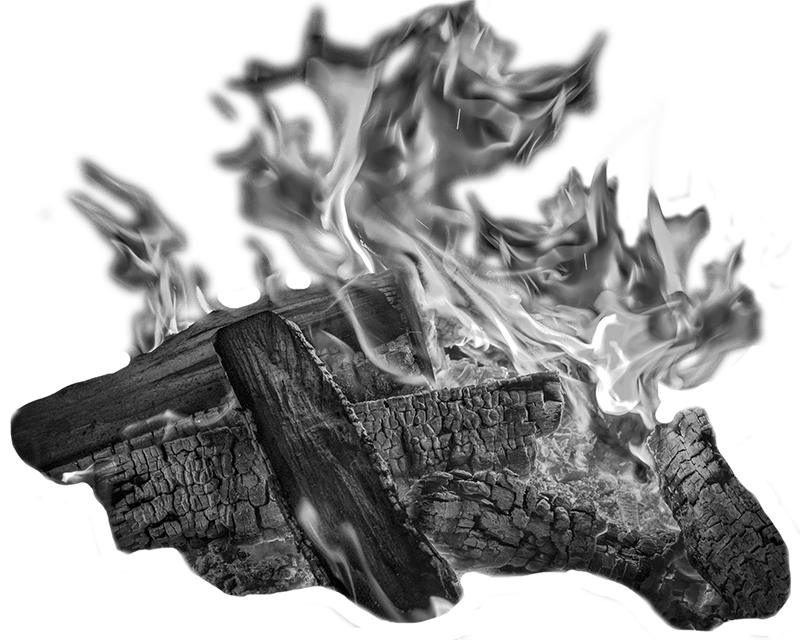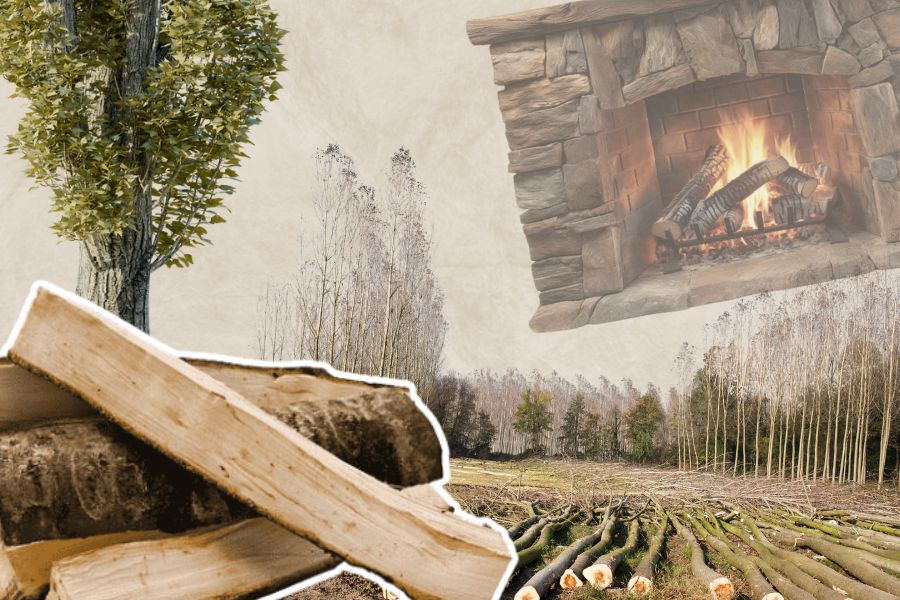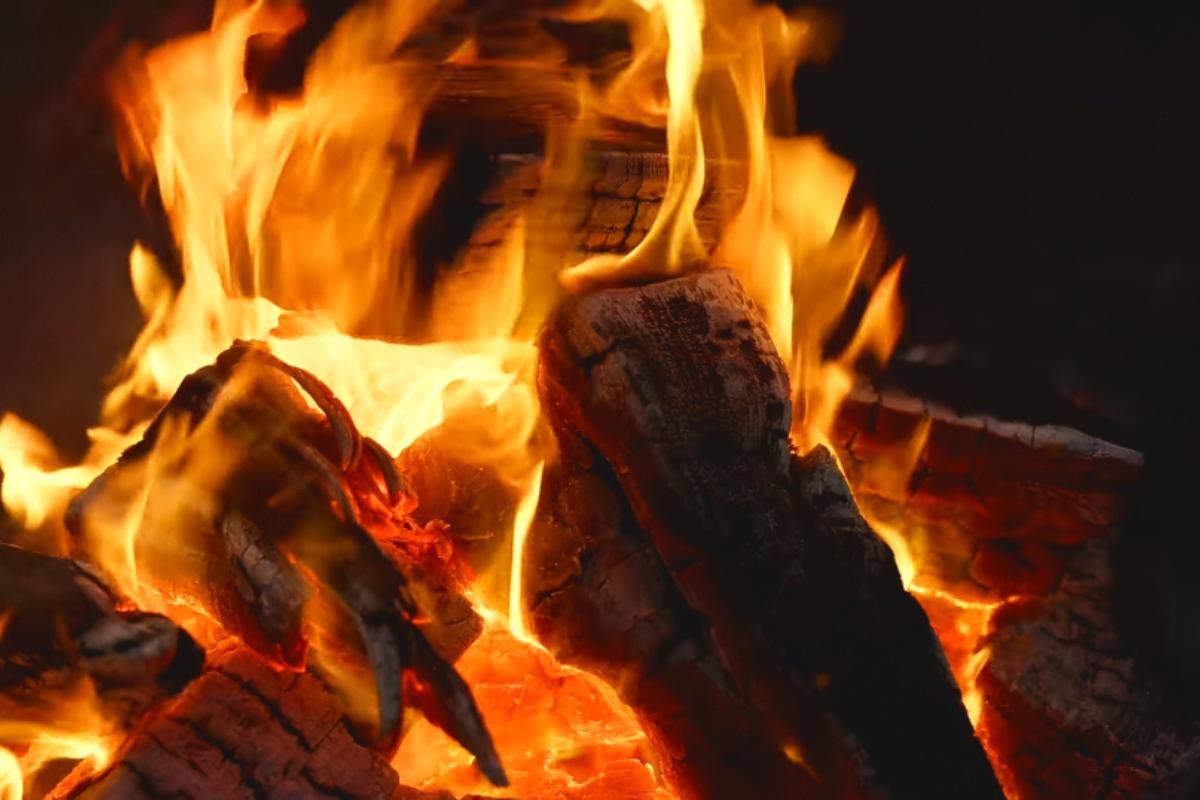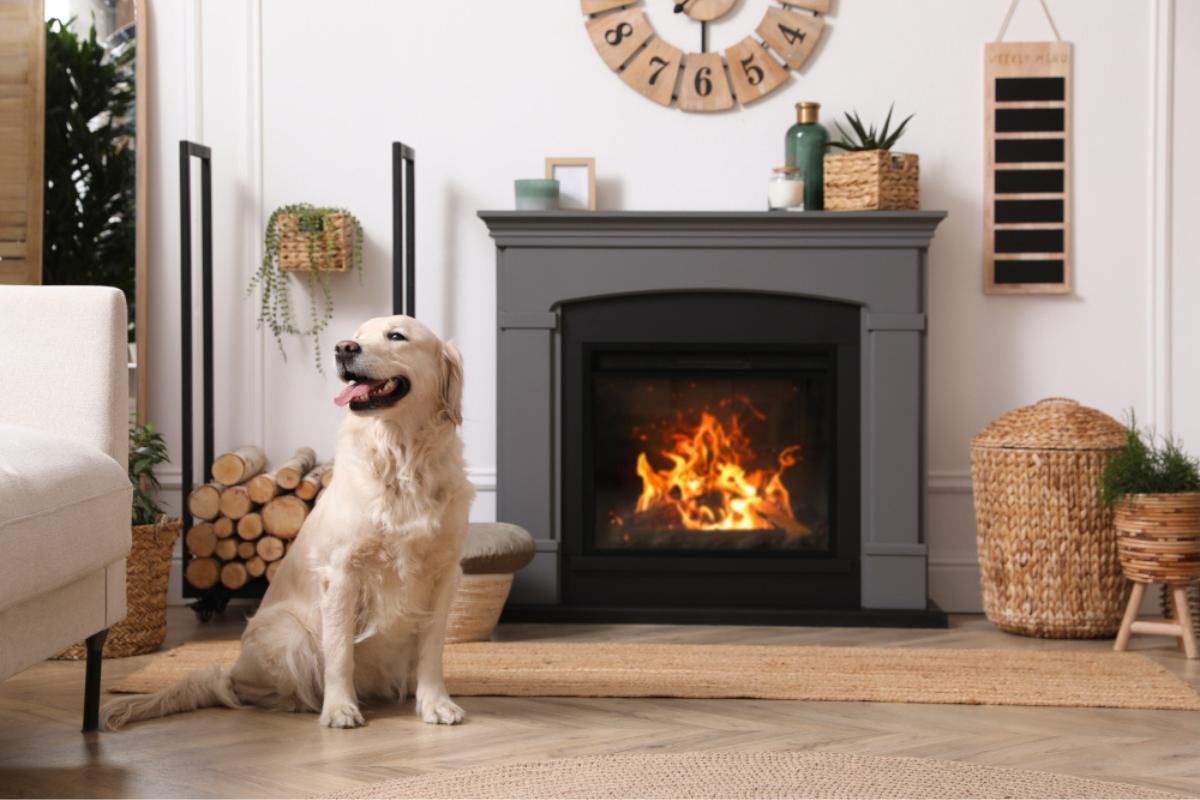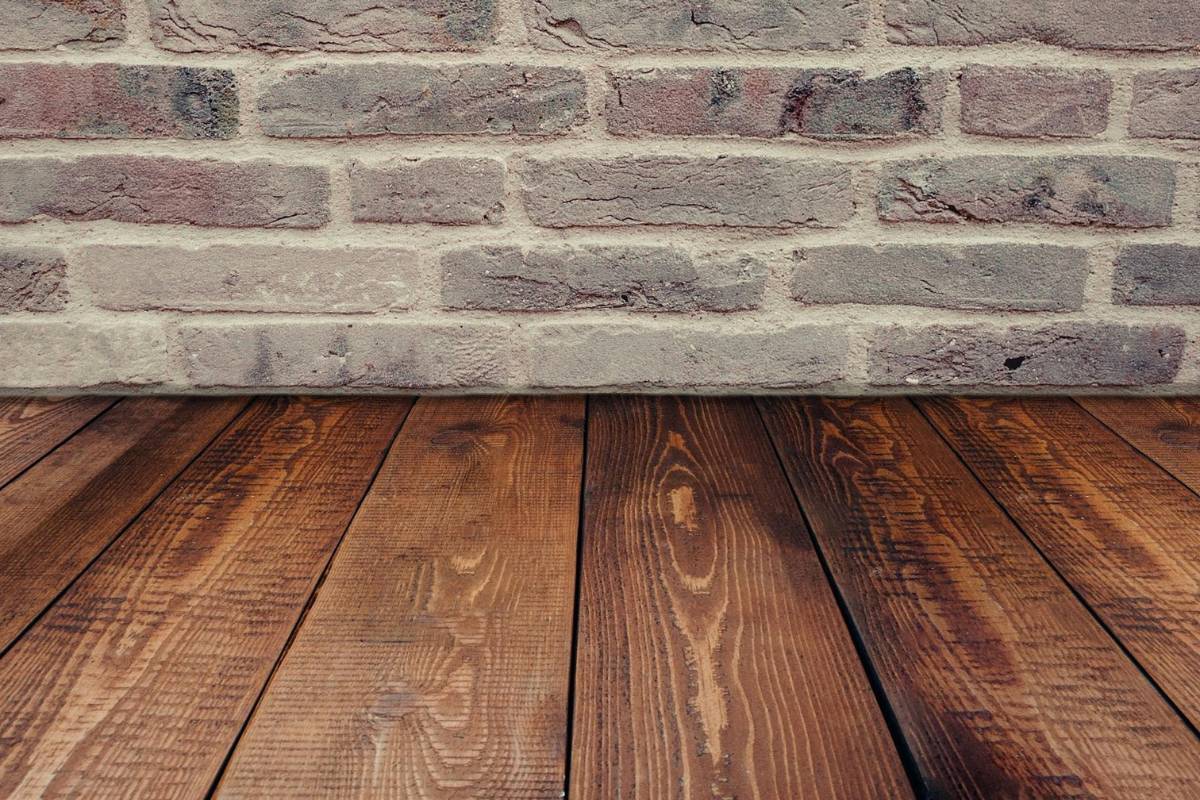Poplar firewood is a popular choice for heating homes and other spaces. Known for its availability, affordability, and ease of burning, poplar wood offers several advantages.
In this comprehensive guide, we will explore different aspects of poplar good for firewood, including the characteristics of poplar trees, common varieties used for firewood, heat production, splitting techniques, comparisons with other firewood types, identification methods, and more.
Are Poplar Logs Good For Firewood?
When it comes to choosing firewood, the quality and performance of the logs matter. Poplar wood, with its moderate density, makes for decent firewood.
While it may not produce the highest heat output compared to denser hardwoods, it still provides sufficient warmth for most heating needs.
Its ease of ignition and quick-burning characteristics make it suitable for starting fires and providing immediate heat.
Common Varieties of Poplar Trees Used for Firewood
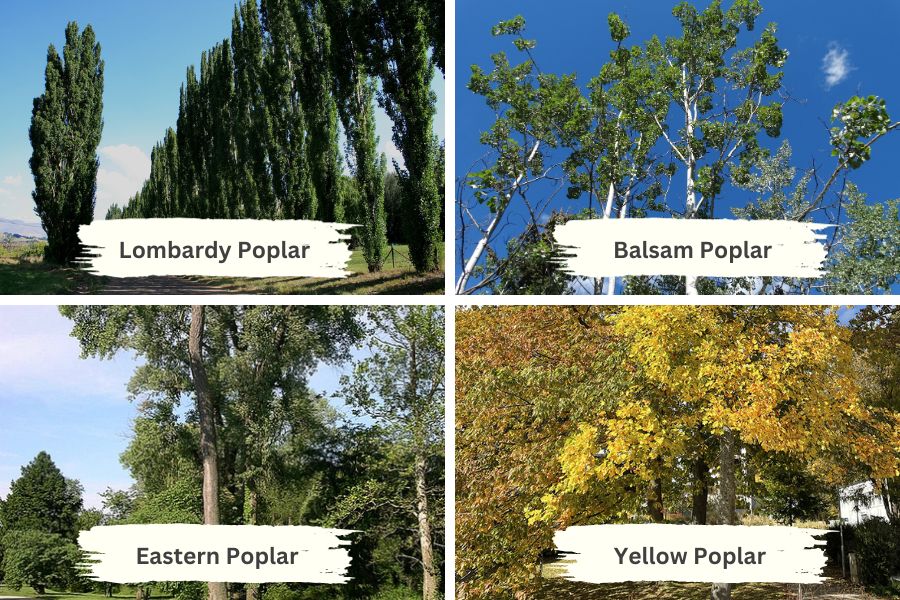
Poplar trees belong to the genus Populus and encompass a wide range of species. Due to their favorable burning characteristics, firewood users commonly rely on various varieties of these trees.
Let’s explore some of the most common varieties:
Lombardy Poplar (Populus nigra ‘Italica’)
Lombardy poplar, a fast-growing tree frequently planted for ornamental purposes, holds value not only for its decorative appeal but also for its wood, which is highly regarded as firewood. This tree has a moderate density, and poplar burns relatively well, providing a steady heat output. Its straight trunk and uniform growth make it easy to harvest and split into firewood logs.
Balsam Poplar (Populus balsamifera)
Balsam poplar is another popular variety. It is known for its moderate density, which allows it to burn longer and provide a good amount of heat. Balsam poplar is relatively easy to split, making it convenient for use in wood stoves or fireplaces. The wood of balsam poplar burns hot and has a pleasant fragrance when burned, adding to the overall ambiance.
Eastern Poplar (Populus deltoides)
Eastern poplar, also known as cottonwood or Carolina poplar, is widely distributed across North America. It is a fast-growing species and is commonly used for firewood due to its availability. While Eastern poplar may have lower density compared to other hardwoods, it still offers decent heat production and burns relatively well. Its light color and straight grain make it visually appealing.
Yellow Poplar (Liriodendron tulipifera)
Yellow poplar, also referred to as tulip poplar or tulip tree, is technically not a true poplar but is often included in discussions about poplar firewood. It is a hardwood species that is highly valued for its strength and versatility. Yellow poplar firewood burns hot and clean, with a pleasant aroma. Its dense wood provides long-lasting heat, making it a popular choice for firewood.
Each of these poplar tree varieties has its own unique characteristics, such as grain patterns, density, and burning qualities.
It’s important to note that proper seasoning and storage are essential for maximizing the performance of poplar firewood, regardless of the variety you choose.
By allowing the wood to dry adequately and storing it in a well-ventilated area, you can ensure that your firewood burns efficiently and produces optimal heat.
Heat Production
While poplar wood may not be the highest in heat production, it still generates considerable warmth. Poplar firewood can effectively heat small to medium-sized spaces when properly seasoned and used in a well-maintained wood stove or fireplace.
Considering factors like the size and insulation of the area being heated becomes important when utilizing this variety.
Splitting Poplar Tree for Firewood
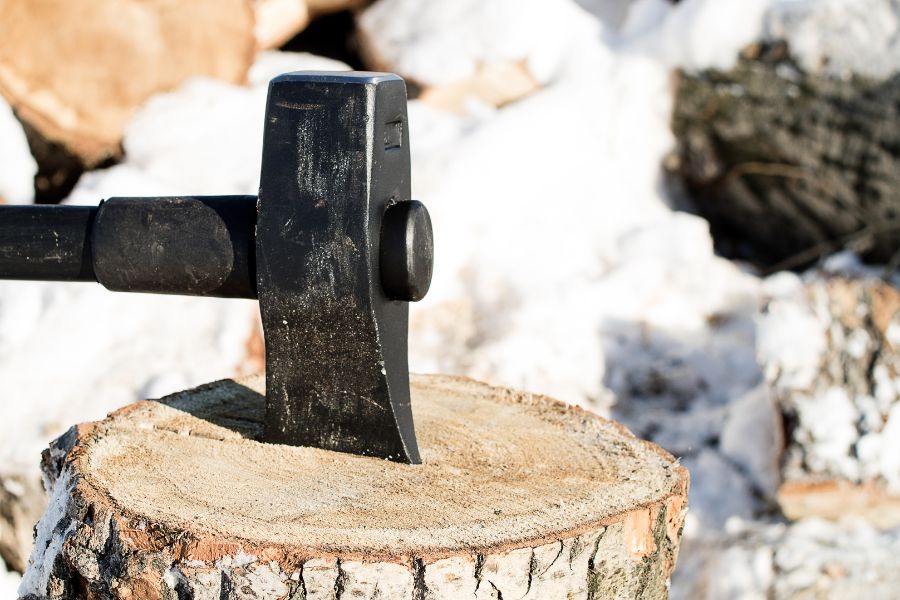
Due to its moderate density, splitting poplar wood can be a relatively straightforward process. However, it is important to use proper techniques and tools to ensure safe and efficient splitting.
A sturdy axe or a log splitter can help you split poplar logs into manageable sizes for use in your wood stove or fireplace.
Comparing Poplar to Other Firewood
When comparing poplar firewood to other commonly used options, here are some key points to consider:
- Hardwoods like oak and maple have higher density, burn longer, and produce more sustained heat compared to white poplar. However, silver poplar ignites more easily and provides quicker warmth.
- Softwoods like pine and spruce burn faster than poplar, but poplar produces less smoke and sap.
- Birch firewood has a similar density to poplar and offers moderate heat output. Birch tends to burn a bit longer than poplar.
- Ashwood provides excellent heat output and longer burn times compared to poplar, but poplar is more affordable and readily available.
- Mixing poplar with denser hardwoods extends burn times and increases overall heat production.
While poplar firewood may not have the longest burn times or highest heat output, it offers advantages in availability, ease of ignition, and affordability.
When combined with other firewood types, it can efficiently heat spaces.
How Can I Identify Poplar Firewood?
Identifying poplar firewood is relatively easy once you know what to look for. Poplar wood typically has a light color with a straight grain pattern.
The presence of small, distinct pores on the surface of the wood is also a characteristic feature.
By examining these visual cues, you can confidently identify these species.
How Do You Identify Poplar Trees?
Identifying poplar trees involves looking at various factors, including the leaves, bark, and overall appearance. Poplar leaves are often characterized by their heart or triangular shape and serrated edges.
The bark of poplar trees is smooth and grayish-green when young, but it becomes furrowed and darker with age.
By familiarizing yourself with these features, you can easily identify poplar trees in their natural environment.
How Does Poplar Compare to Other Types of Firewood?
When comparing it to other types of firewood, factors such as moisture content, density, and ease of ignition play a crucial role.
Poplar wood generally has a lower moisture content, making it easier to ignite compared to wetter wood types.
While it may not smoke poplar and not have the density of hardwoods like oak or maple, it still burns well and provides moderate heat.
Seasoning and Storing Poplar Firewood
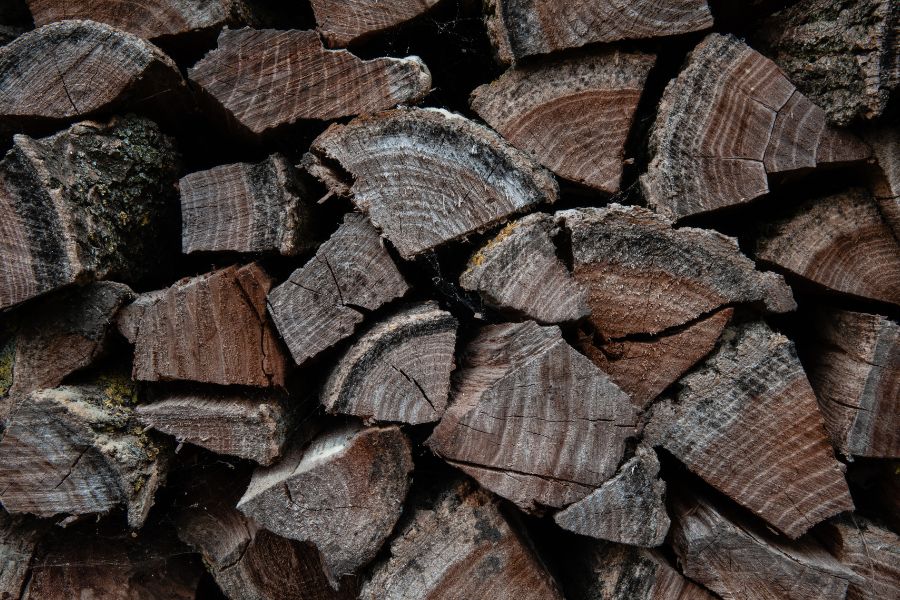
Properly seasoning and storing poplar wood is essential for optimal burning efficiency. To guarantee a moisture content below 20%, seasoning poplar wood for a minimum of six months to a year is recommended.
Storing the firewood in a well-ventilated area, off the ground, and protected from excessive moisture will help the wet wood maintain its quality.
The Sustainability of Poplar Firewood
Poplar firewood is a practical heating option and an environmentally sustainable choice.
The rapid growth of poplar trees sets them apart, as they can be harvested and replenished faster than slower-growing hardwood species. This fast growth rate makes them a renewable resource for firewood.
Furthermore, poplar trees have the ability to absorb significant amounts of carbon dioxide from the atmosphere, helping to mitigate climate change.
By using poplar, you can contribute to reducing carbon emissions and promote sustainable forestry practices. It is important, however, to ensure that the poplar firewood you obtain comes from responsibly managed and sustainably harvested sources to maximize its environmental benefits.
Uses of Poplar Wood Beyond Firewood
Beyond being used as firewood, poplar wood has various other applications. Its straight grain and light color make it suitable for furniture making, cabinetry, and other light woodworking projects. Additionally, poplar wood is often used in construction and as a material for crafting due to its versatility and availability.
Common Issues and Solutions with Poplar Firewood
While poplar firewood offers many benefits, it is not without its challenges. One common issue is that poplar can burn quickly, requiring more frequent reloading in the fireplace or wood stove.
However, this can be managed by combining it with slower-burning firewood types.
Additionally, ensuring proper seasoning and storage can help reduce the occurrence of issues such as excessive smoke or difficulty in ignition.
The Popularity of Balsam Poplar Firewood

Balsam poplar, a popular variety of poplar for firewood, earns recognition due to its moderate density, ease of splitting, and relatively high heat production.
Balsam poplar offers a good balance of slow-burning wood and characteristics, making it a preferred choice for many users.
Safety Tips for Using Poplar Firewood
As with any type of firewood, safety should be a top priority when using poplar firewood. Ensure proper ventilation in the room where the wood stove or fireplace is located.
Regularly inspect and clean the chimney or flue to prevent the buildup of creosote. Follow all manufacturer guidelines when operating wood stoves and adhere to general fire safety practices.
Conclusion
Poplar firewood, derived from various poplar tree species, provides a viable heating option for many households.
While it may not be the densest or longest-burning firewood available, it offers advantages in terms of availability, affordability, ease of ignition, and moderate heat production.
By understanding its characteristics, properly seasoning and storing it, and using it in combination with other firewood types, you can enjoy the warmth and comfort that firewood brings to your home.
